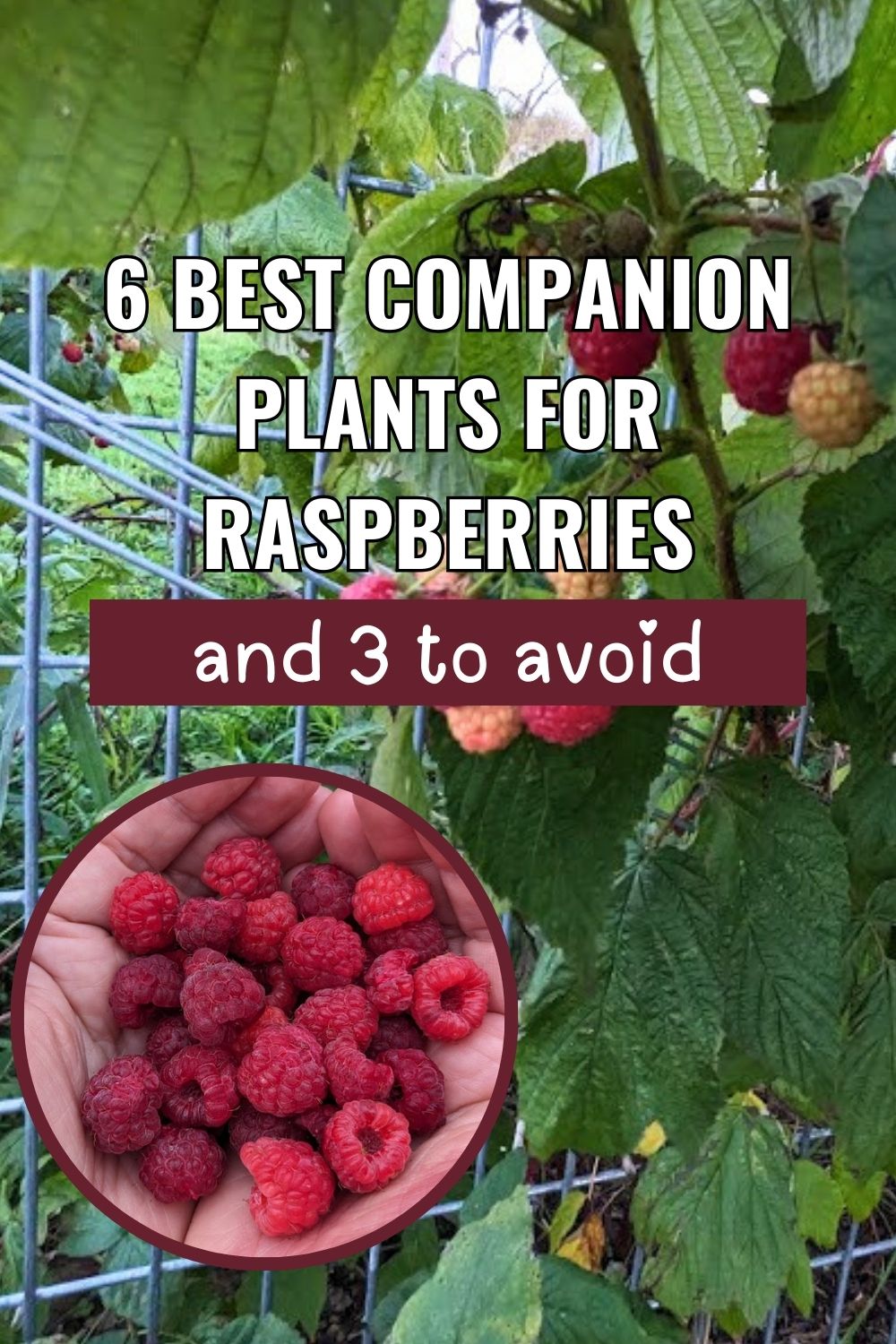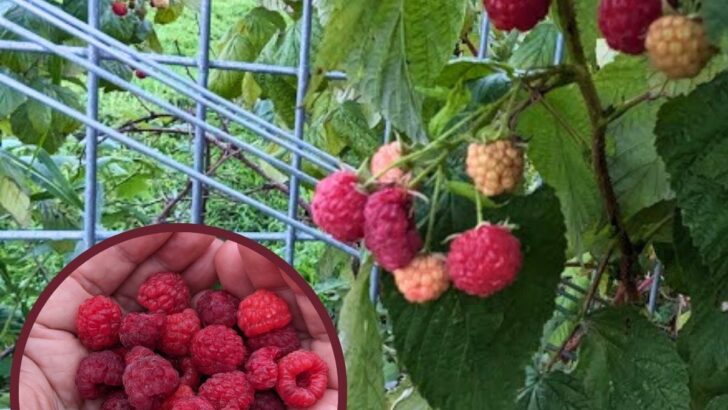When you plant your first raspberry patch, there appears to be a lot of empty space around the vertical-growing canes, and it can be tempting to fill in those bare spots with some companion plants. However, raspberries send up new canes every year and may need that extra space as they fill out and spread. The best companion plants for raspberries will attract pollinators, deter pests, enrich the soil, and provide other benefits while still allowing new raspberry canes room to grow.
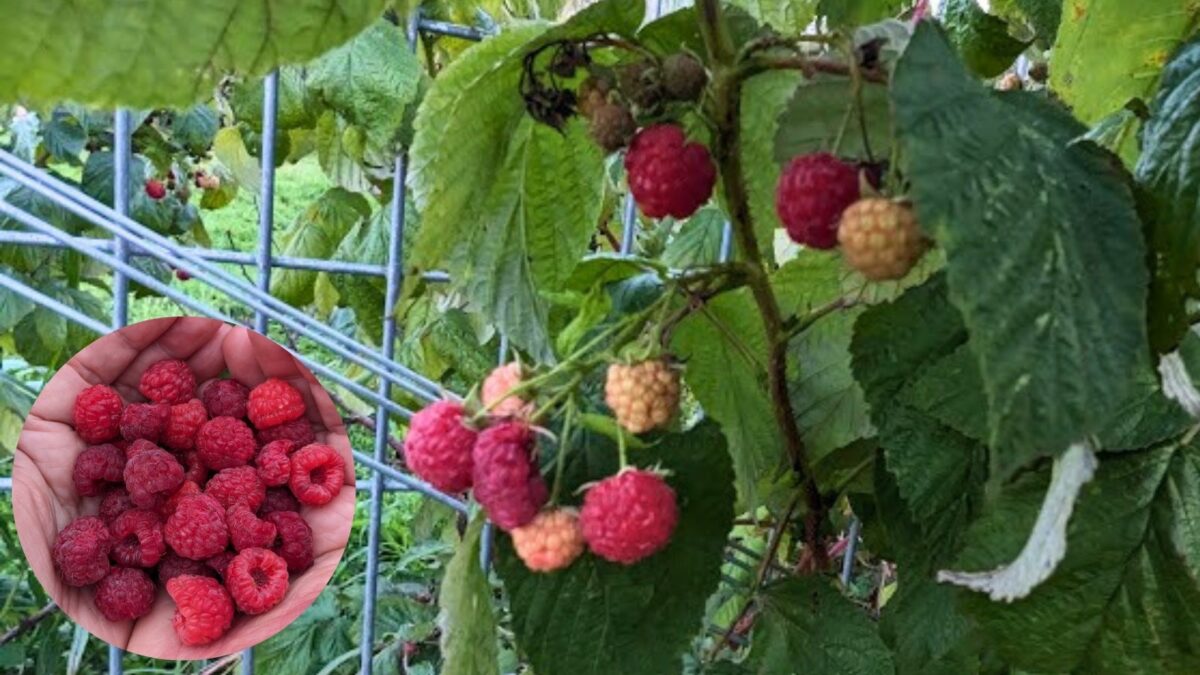
Best Companion Plants for Raspberries
In addition to the considerations above, when choosing companion plants for raspberries, keep in mind that raspberry plants like full sun, well-drained soil, and good air circulation. The following list includes some of the best raspberry companion plants, so you can spend less time researching and more time in the garden.
A quick note: Because raspberries need space for new canes to grow, many growers recommend simply spreading a thick layer of mulch around the canes and reserving companion planting methods for elsewhere in the garden. You can, of course, follow this advice, choose to intercrop your raspberries anyway, or choose a hybrid method, in which you mulch around the raspberry canes and plant companions nearby rather than immediately surrounding the raspberries. Play around with different options if you like, and see what works best for you!
1. Chives
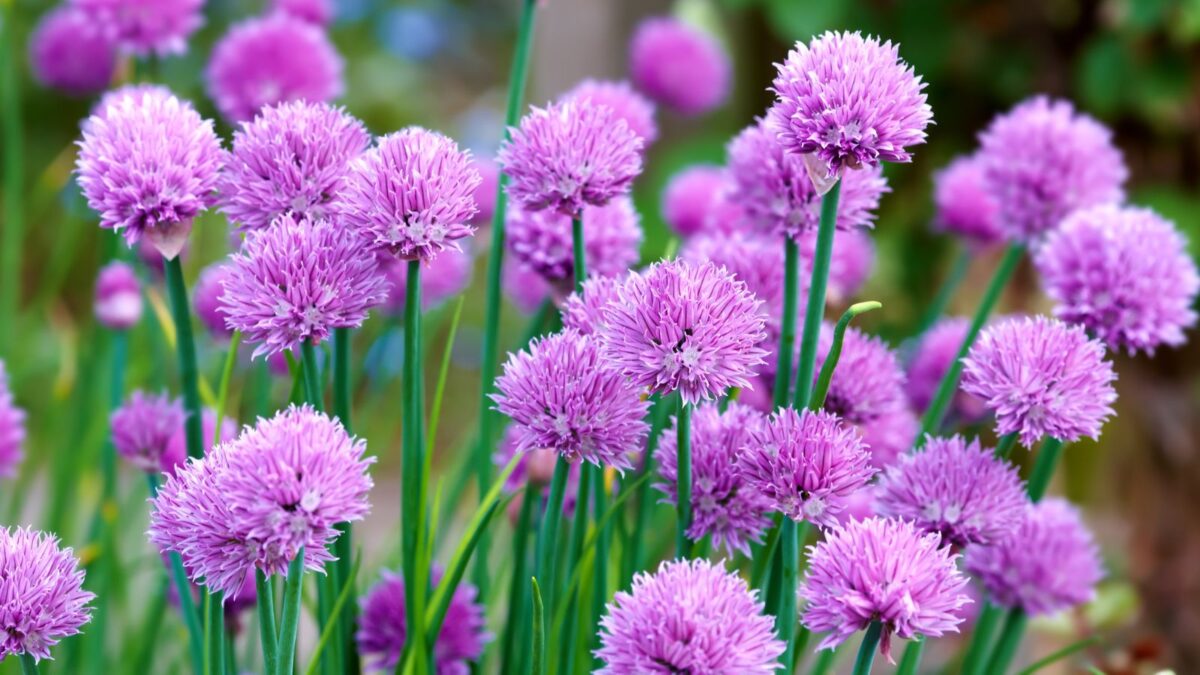
An excellent companion for many plants, alliums help deter Japanese beetles and other pests with their pungent aroma. Chives have the added benefits of upright, grassy foliage that takes up little space and of being perennials that are cut rather than dug up when harvested, meaning the soil around your raspberries will remain undisturbed.
When allowed to flower, chives and other alliums also attract pollinators.
2. Marigolds
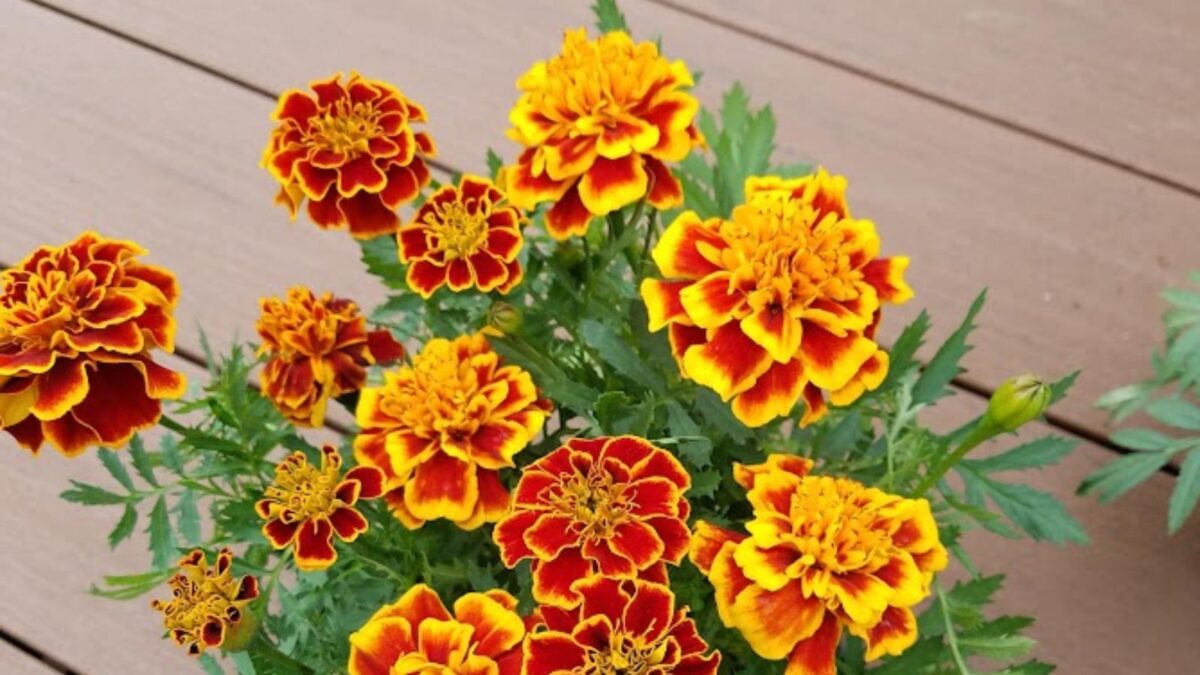
The cheery ruffled blooms of marigolds will attract pollinators as well as other beneficial insects, like parasitic wasps and ladybugs, that feed on pests in your raspberry patch. The strong, spicy floral scent of marigolds is also said to repel some garden pests. And marigolds are perhaps best known for discouraging root rot nematodes, especially when worked into the soil at the end of the season.
Buy marigold seeds from Amazon.
3. Nasturtiums
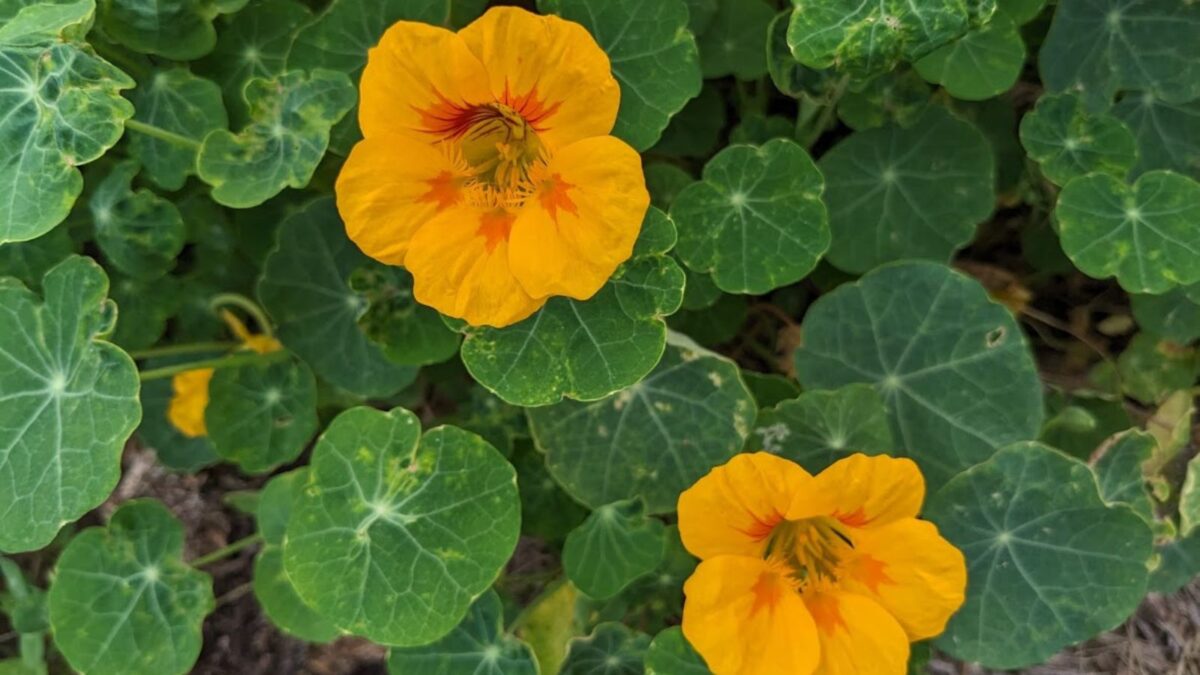
Nasturtiums also encourage pollinators and predatory insects to visit the raspberry patch with their bright flowers. While these peppery edible flowers repel some insect pests, like whiteflies, they attract others, making them a good trap crop. To use nasturtiums as a trap crop, plant a patch of them near the raspberries. Then once you notice a good population of pests has settled into the nasturtiums, destroy the trap crop, pests and flowers and all.
Learn more about growing nasturtiums.
4. Rue
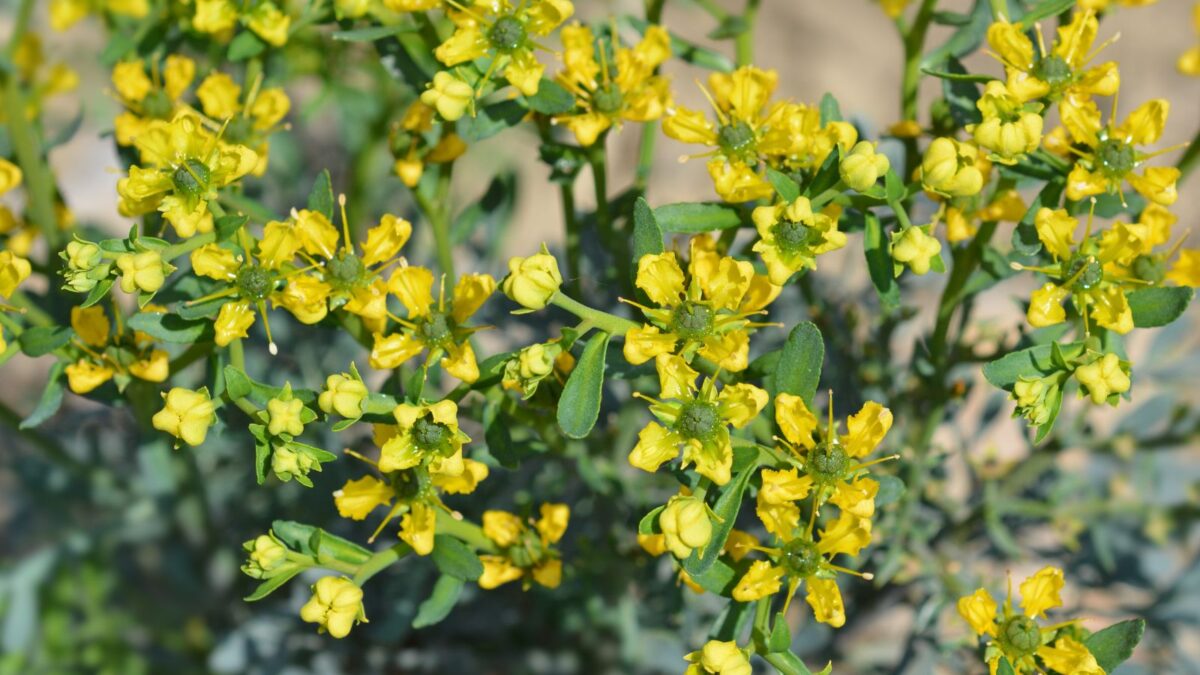
If Japanese beetles plague your raspberry canes, try planting rue nearby to repel these devastating insects, as well as some other pests. Though no longer a popular herb, this perennial produces masses of tiny yellow flowers held in flat umbels above beautiful ferny foliage throughout the summer. These lovely little flowers entice many pollinators too. Keep in mind, however, that the foliage can cause skin irritation for some people.
5. White clover
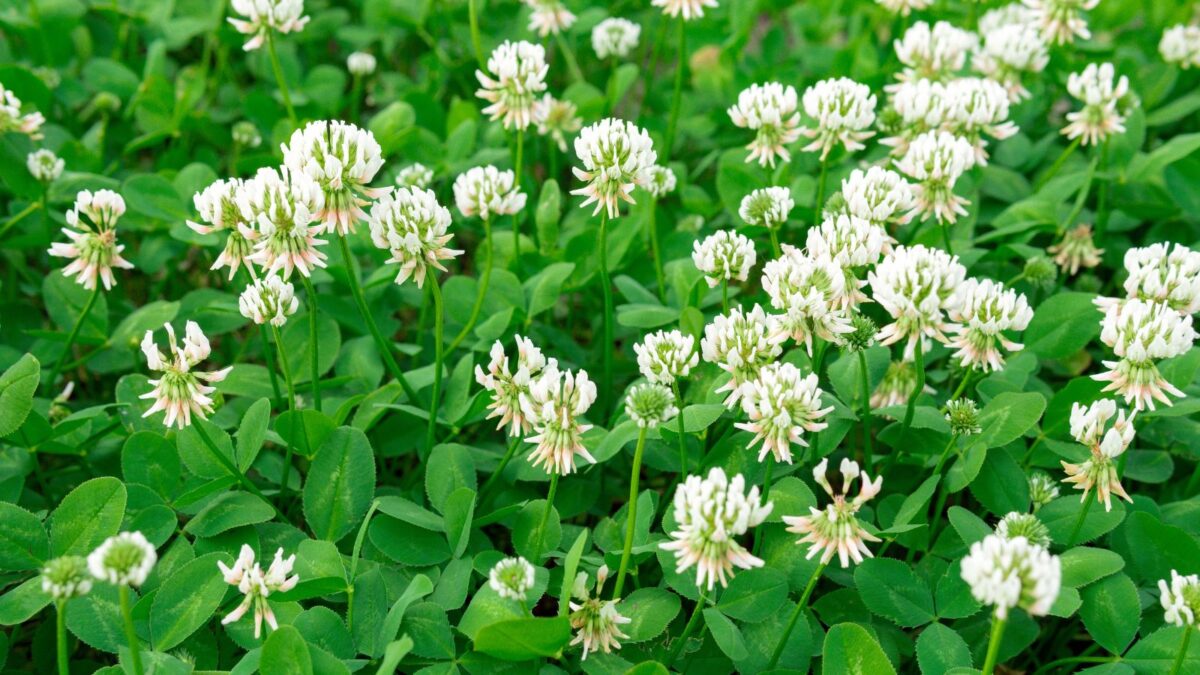
If you only choose one companion plant for your raspberries, white clover might be it. This hardy little cover crop acts as a living mulch, suppressing weeds and improving moisture retention in the soil. And as a legume, it fixes nitrogen in the soil, making it more readily available for the raspberry plants nearby. Finally, when it blooms, white clover attracts bees and other pollinators in droves.
6. Yarrow
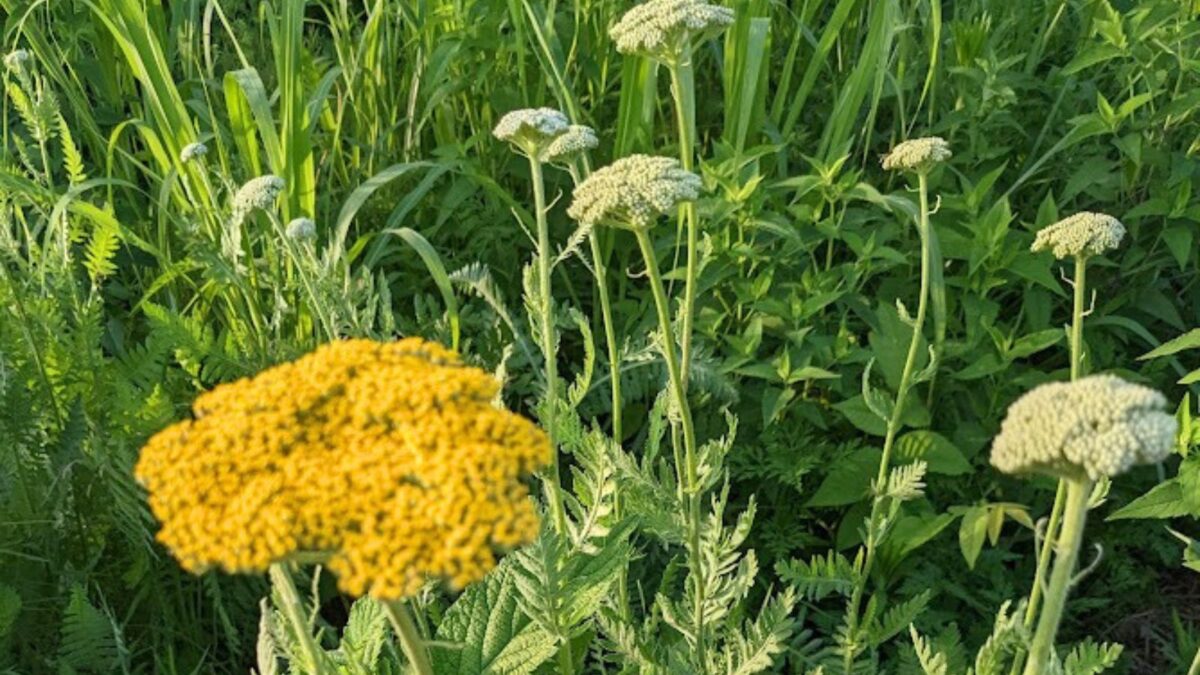
Just about any plant with flat-topped flower clusters will attract predatory insects that feed on pests like Harlequin bugs, and yarrow is no exception. This lovely perennial has soft, ferny foliage and lovely flowers available in various colors thanks to a range of cultivars. It blooms midsummer into fall and, of course, draws in pollinators as well.
Worst Companion Plants for Raspberries
While the plants listed above make great companions for raspberries, many plants will instead compete for space or nutrients, share diseases, or have differing growing requirements. The following three should especially be avoided.
1. Blackberries
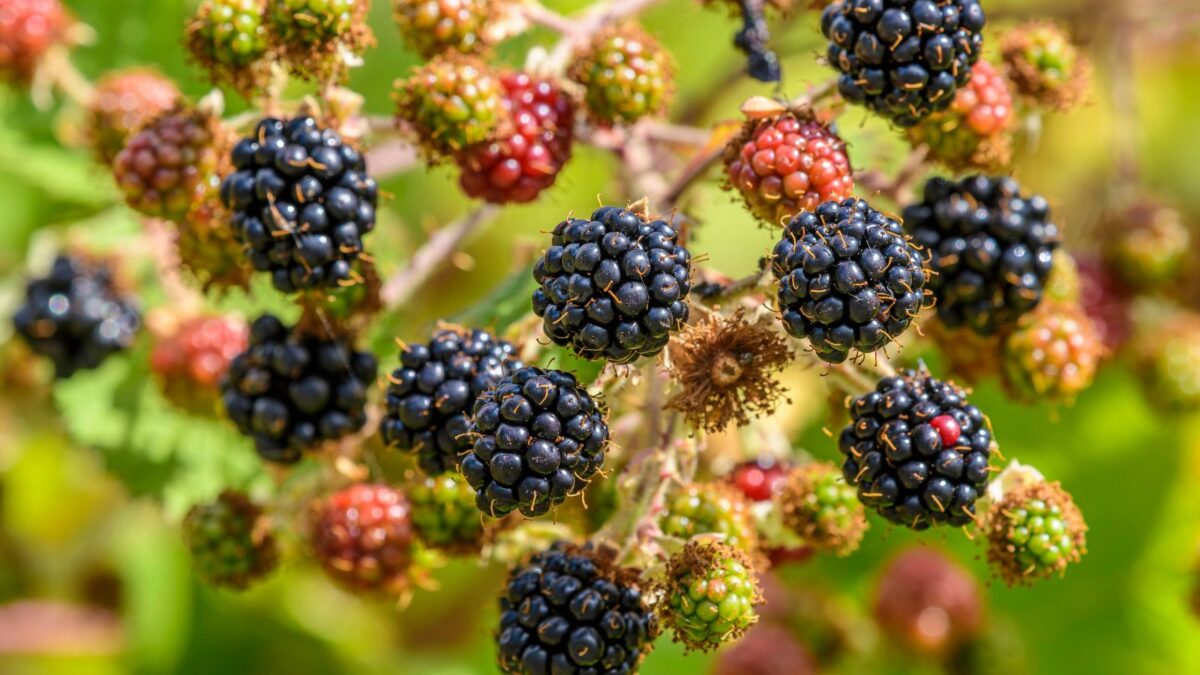
Because bramble fruits can share viruses and soil-borne fungal diseases with each other, raspberries should not be planted near blackberries or other members of the Rubus genus. It is also a good idea to keep red raspberries separate from black and purple varieties.
2. Potatoes
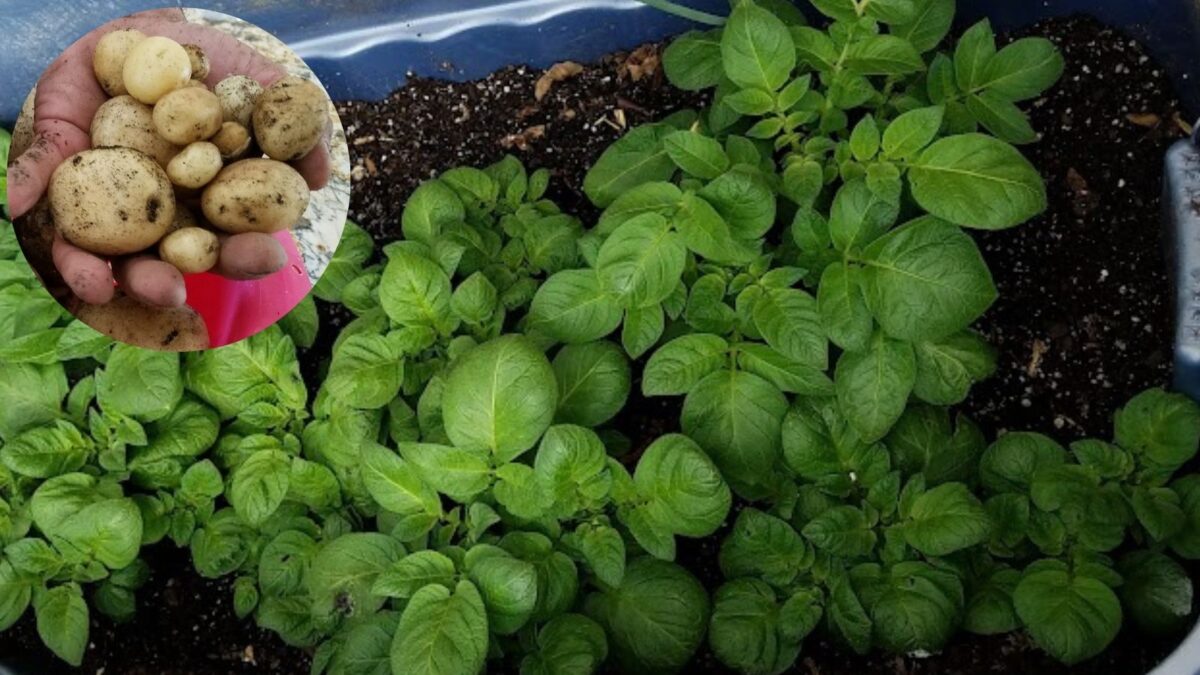
Potatoes and other nightshades should also be kept at a distance from raspberries. These vegetable plants carry blight and verticillium wilt, a devastating fungal disease, and can spread both to raspberries.
3. Strawberries
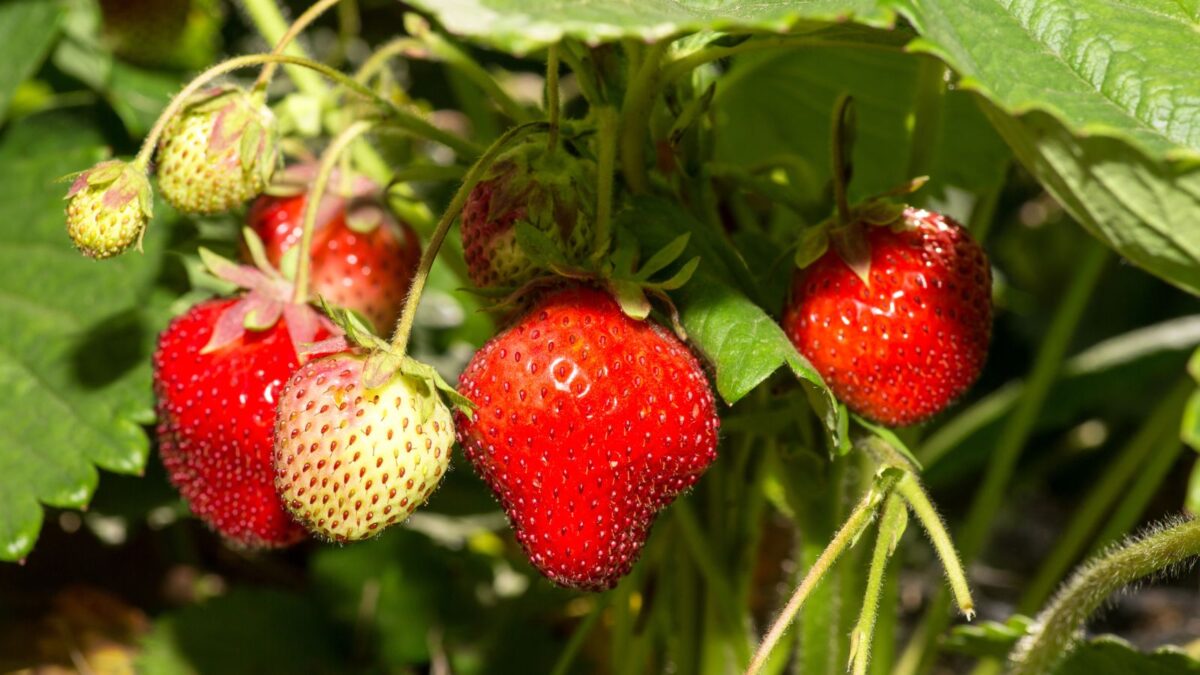
Though it may be tempting to underplant raspberry canes with strawberries to serve as a low-growing ground cover, these also share diseases and pests. If it’s a living mulch you’re looking for, stick with highly beneficial white clover (see above), and locate the strawberry patch elsewhere.
Raspberries can be a little tricky to interplant, but with the right companions, they will thrive! Just remember to give them space to sprawl and choose companions that share similar growing requirements but not the same diseases. I’m thinking some white clover with a few chives and marigolds toward the edges might be nice!
